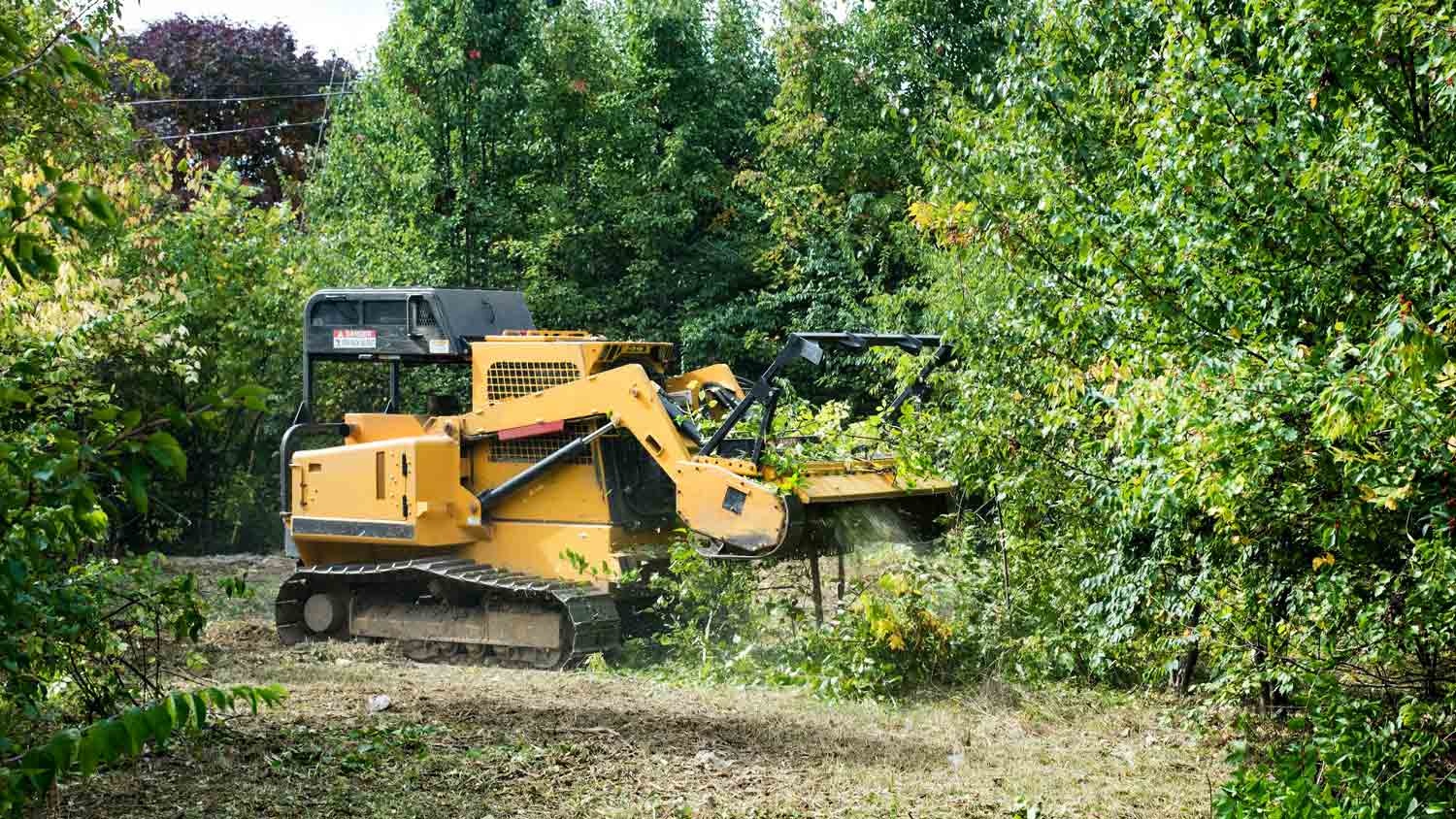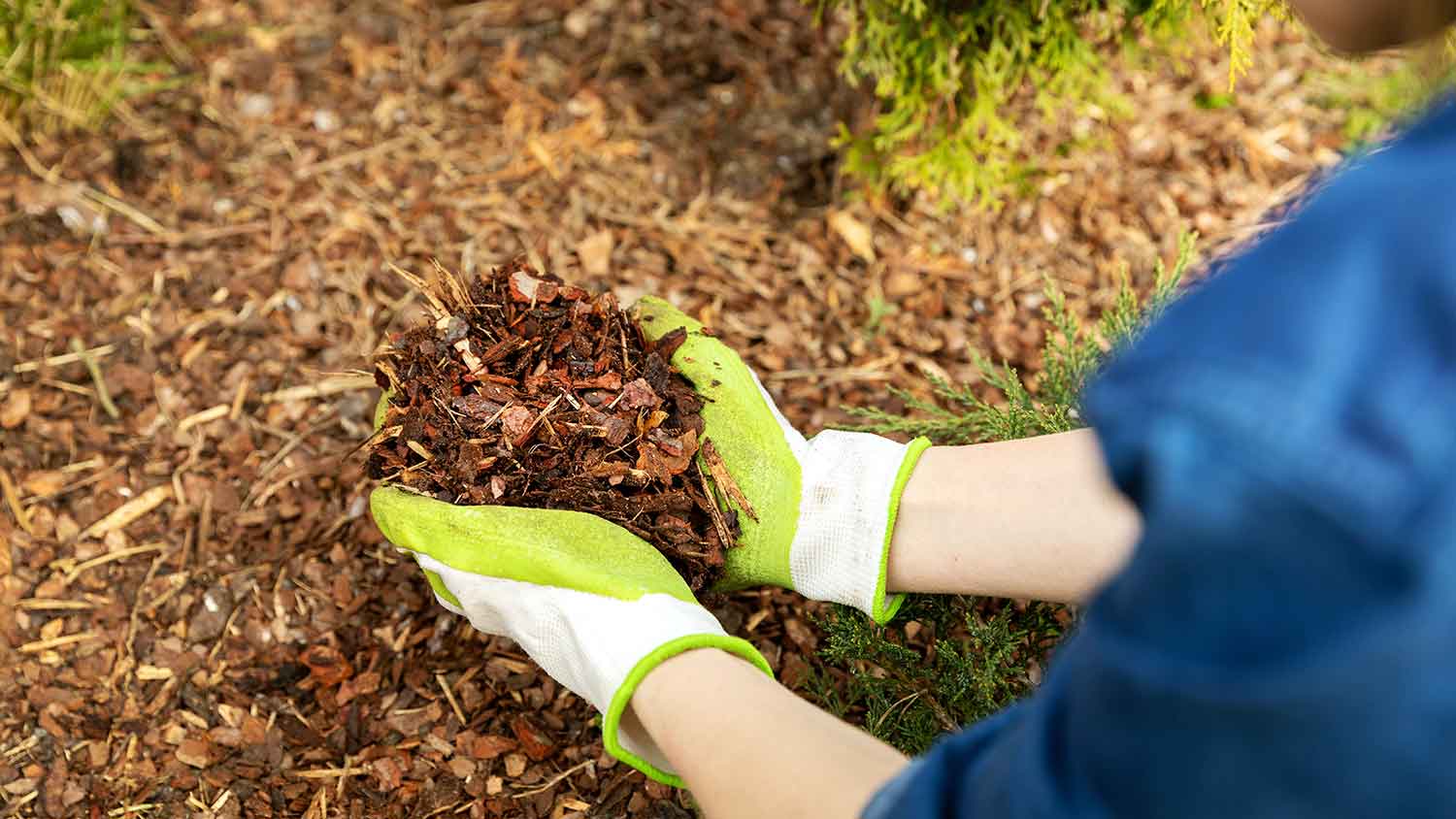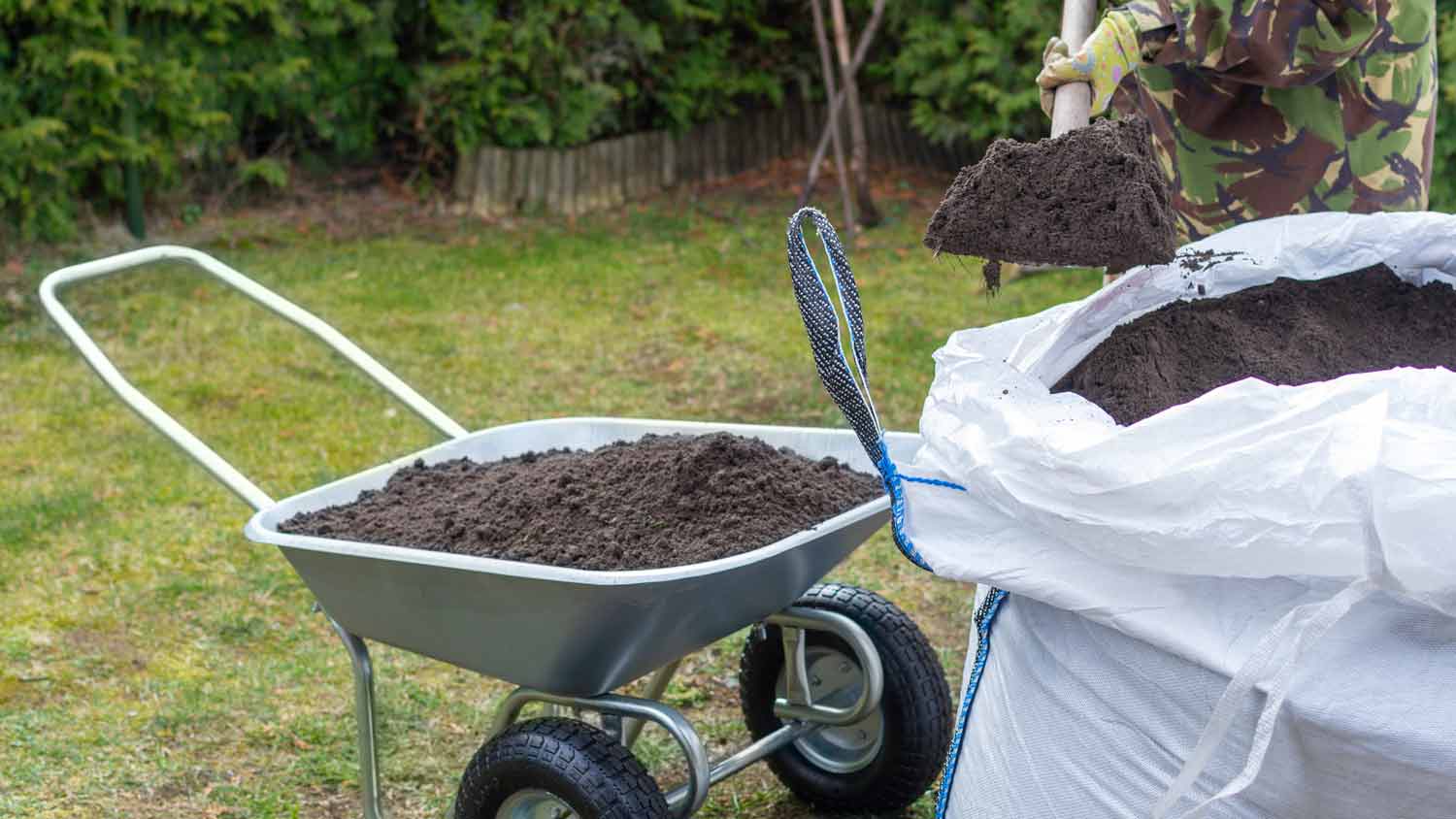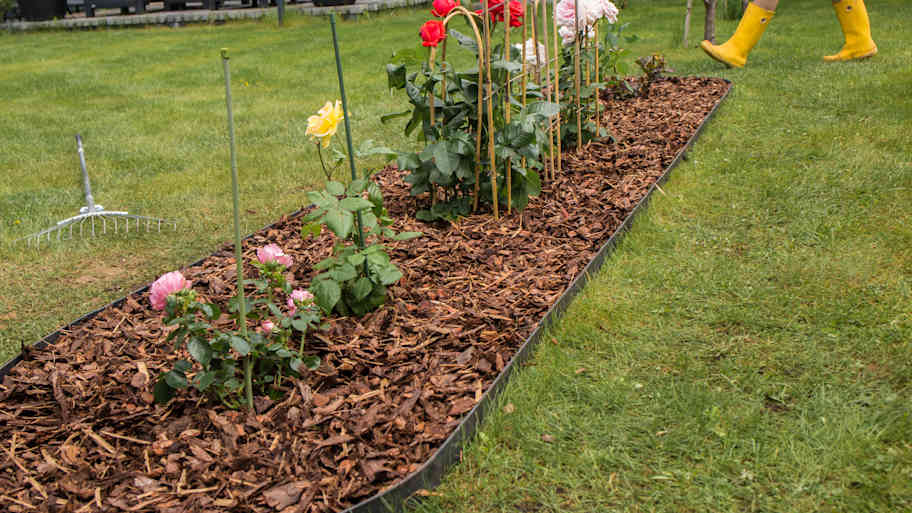
Discover the average forestry mulching cost, including per-acre and hourly rates, plus key factors that impact your total price. Get expert tips to save on your project.
Mulch removal costs an average of $50 to $2,000, with most homeowners paying between $150 and $1,200. Your price depends on the amount of mulch, site accessibility, and labor rates.


Mulch removal costs depend on the size of the yard and the volume of mulch.
Accessibility and labor rates can significantly impact your price.
Removing old mulch enhances soil health and improves the landscape's appearance.
Professional mulch removal ensures proper disposal and cleanup.
Bundling mulch removal with other landscaping tasks may save money.
This article was created using automation technology and thoroughly fact-checked and edited by an Angi Editor in accordance with our AI policy.
Mulch removal costs average $150 to $1,200 for most homeowners, with prices ranging from as low as $50 to as high as $2,000, depending on the project size and complexity. Expect to pay $0.50 to $1.00 per square foot, or $50 to $100 per cubic yard, for professional mulch removal, which includes both labor and disposal costs.
Removing old mulch is a crucial step in maintaining healthy and attractive landscaping. In this guide, we’ll break down what affects mulch removal cost, walk you through your options, and answer the most common homeowner questions.
The size of your mulch area is the primary factor in determining the cost of mulch removal. The more mulch you need removed—whether measured by square footage or cubic yards—the higher the total price will be. Small garden beds cost less to clear than large landscaping zones, and deeper mulch layers increase the volume of material that needs to be hauled away.
When considering mulch removal, think about whether you need a partial cleanup or a complete overhaul. Removing mulch from a small flower bed will cost less than clearing a full yard or multi-zone landscape. Depth matters, too, as a thicker layer of mulch means more volume and a higher cost. To estimate volume, multiply length by width by depth (in feet) and divide by 27 for cubic yards.
| Project Size | Description | Average Cost | Cost Range |
|---|---|---|---|
| 50 sq. ft. or 1 cu. yd. | Small garden bed | $75 | $50–$150 |
| 200 sq. ft. or 4 cu. yd. | Medium-sized yard area | $300 | $150–$500 |
| 500 sq. ft. or 10 cu. yd. | Large landscaping zone | $700 | $400–$1,200 |
| Full yard (1,000+ sq. ft.) | Complete landscape removal | $1,100 | $800–$2,000 |
Where you live can affect the cost of mulch removal due to variations in labor rates, local regulations, and disposal fees. Urban areas often have higher prices due to increased demand and stricter waste management regulations. In rural locations, labor may be less expensive, but travel fees or limited disposal sites can increase your final bill.
Climate also plays a role in mulch removal costs. Wet mulch is heavier and more difficult to remove, especially in regions with frequent rain or high humidity. Local landfill or green waste fees might apply, and some cities require special handling for yard waste.
Several factors come together to determine the cost of mulch removal, including labor and special site considerations. Let’s look at the most important details.
Landscapers or yard cleanup crews handle most mulch removal jobs. These professionals may charge a minimum service fee, especially for smaller projects. Pricing can be based on hourly rates, per cubic yard, or per square foot. Labor costs rise with bigger crews and longer project durations. In cities with higher living costs or strong demand for landscaping services, expect to pay a higher price.
Labor fees include hand removal, loading mulch, hauling it away, and site cleanup. If your yard is difficult to access or has obstacles, labor time and price increase.
Permits for mulch removal are rarely required for standard residential projects. However, large-scale jobs—such as clearing extensive commercial landscapes or removing mulch near protected trees—may need permits. Always check local regulations about yard waste disposal. If a permit is needed, fees range from $25 to $100.
Costs rise if the job involves more than just mulch. If there’s landscape fabric, edging, or weed barriers beneath the mulch, these need to be removed and disposed of. Mixed debris—such as rocks, roots, or trash—adds to the workload. Steep slopes, tight spaces, or areas with limited access may require specialized equipment, such as loaders or dumpsters, which can further increase the price.
Project complexity is a significant factor in determining the cost of mulch removal. If your landscaping features numerous obstacles, slopes, or intricate elements, expect the cost to increase. Limited access for equipment and trucks can add time and labor. You may need to clear pathways or protect existing plants before work begins.
After mulch removal, cleanup, and site restoration (such as soil leveling or minor repairs) are often included, but they can add to the overall bill. If you plan to redesign your landscape after removing the mulch, factor in any design or consultation fees. Some homeowners’ associations or municipalities require inspections, which can cost extra.
Mulch removal projects can come with other costs beyond labor and hauling. Here are the main ones to keep in mind.
Some landscaping companies offer service warranties for mulch removal. These may cover thorough site cleanup or repairs for accidental damage to your property. While warranties provide peace of mind, they can add a small premium to your overall mulch removal cost.
After the mulch is gone, your yard may need extra care. You might need to control weeds, amend the soil, or reseed bare areas. Landscaping costs also come into play if you choose to replant or install new mulch or ground cover.
It’s essential to hire insured professionals for mulch removal. This protects you from liability in case of property damage or injury during the job. If your project is particularly large or complex, you may incur an additional cost for extra insurance coverage.
Homeowners often wonder whether to tackle mulch removal on their own or hire a mulch pro near you. Both options have their own costs and considerations.
DIY mulch removal can save money, but it does require time, effort, and some equipment. You’ll need basic tools, such as shovels, rakes, and heavy-duty trash bags, as well as a wheelbarrow, if available. For larger jobs, renting a dumpster or truck may be necessary. Out-of-pocket costs for a small project might be as little as $40 to $100 for supplies. For larger projects, expect to spend between $150 and $400, especially if you need to rent equipment or incur disposal fees.
DIY can reduce labor costs, but it’s physically demanding and time-consuming. Removing mulch from a small bed may take a few hours, while removing it from a full yard can take a whole weekend or more. Risks include back strain, improper disposal (which can result in fines), and accidental damage to plants or irrigation systems.
| Removal Method | Out-of-Pocket Cost | Labor Needed | Pros | Cons |
|---|---|---|---|---|
| DIY (small bed) | $40–$100 | 2–4 hours | Saves money, flexible timing | Physically demanding |
| DIY (medium yard) | $100–$250 | 5–8 hours | Good for moderate budgets | Disposal can be a hassle |
| Pro (small bed) | $75–$150 | 1–2 hours | Fast, includes cleanup | Higher cost |
| Pro (medium yard) | $200–$500 | 2–4 hours | Professional results | Less flexible scheduling |
Mulch removal can improve your home’s curb appeal and property value, especially if old mulch is unsightly or harbors pests. Removing old mulch enables soil rejuvenation, promotes better plant health, and provides a fresh start for future landscaping projects.
Compared to other landscaping upgrades, mulch removal is a cost-effective improvement that delivers a significant visual impact. ROI depends on your local market, but a well-maintained yard can help homes sell faster and boost their appraised value. Safety, improved drainage, and easier maintenance are additional benefits that contribute to the overall value.
Here are a few helpful ways to keep mulch removal costs within budget:
Schedule mulch removal during off-peak landscaping seasons for better rates.
Get multiple quotes from local pros to compare mulch removal costs.
Combine mulch removal with other landscaping tasks to save on labor.
Remove accessible mulch yourself and hire a pro for difficult areas.
Reuse or recycle old mulch where possible to reduce disposal fees.
Prepare the site in advance (clear obstacles, mow grass) to minimize labor time.
Home is the most important place on earth, which is why Angi has helped more than 150 million homeowners transform their houses into homes they adore. To help homeowners with their next project, Angi provides readers with the most accurate cost data and upholds strict editorial standards. We extensively research project costs to develop the pricing data you see, so you can make the best decisions for you and your home. We rely on reputable sources, including the U.S. Bureau of Labor Statistics, academic journals, market studies, and interviews with industry experts—all to ensure our prices reflect real-world projects.
Want to help us improve our cost data? Send us a recent project quote to [email protected]. Quotes and personal information will not be shared publicly.
From average costs to expert advice, get all the answers you need to get your job done.

Discover the average forestry mulching cost, including per-acre and hourly rates, plus key factors that impact your total price. Get expert tips to save on your project.

Get clear, up-to-date fill dirt cost info. Learn average prices, cost factors, and tips to save on your next fill dirt project.

Gravel is an inexpensive paving material overall, but costs vary by type. Find out what average gravel prices will look like for your project.

Not sure whether to use black or brown mulch? Learn how each type affects your soil, plants, and garden style so you can pick the right fit.

Explore a guide to mulch versus rock landscaping. Uncover the pros, cons, costs, and more to shape a garden mirroring your style and landscaping needs.

If you’re planning a garden and asking yourself, “How many yards of dirt do I need?” this dirt calculator will help you do the math to find the right number.